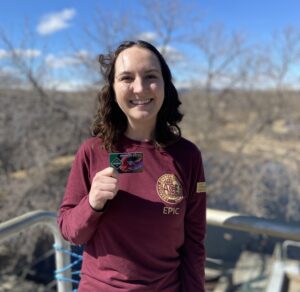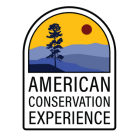
Photo of the National Elk Refuge. Photo credit: USFWS
I began my term as a Conservation Science Communication Fellow for the US Fish and Wildlife Service about six months ago. My one-year EPIC fellowship is based at the Natural Resource Program Center in Fort Collins, CO, which is responsible for providing scientific information and support to the National Wildlife Refuge System. I work in the Science Translation for Adaptation Response Team (START), an interdisciplinary team that includes people with backgrounds in physical, biological, and social sciences. Our aim is to provide climate information and adaptation support to Wildlife Refuges so that the National Wildlife Refuge System can meet its conservation mission and adapt to rapidly changing ecological and global conditions.
Currently, our team’s primary focus is developing and delivering Climate Exposure Reports. Reports summarize historical and future projected climatic conditions at an individual Wildlife Refuge, including specific projections for temperature, precipitation, water availability, and drought. The reports are intended to help Refuges understand the specific challenges they may face in the future and inform resource management and decision-making. In my role with START, I have assisted with updating older versions of the Climate Exposure Reports to reflect new information and priorities, working in the coding tool R Markdown to ensure the reports can be generated in a way that is consistent and efficient, and streamlining the process of generating and sending reports to Refuges using a suite of online tools. START began creating and sending the Reports in the summer of 2024. Since I joined in fall of 2024, we have sent reports to 33 Wildlife Refuges in support of a variety of conservation and management initiatives.
One way in which I have had the opportunity to directly support Refuge management with START was though collaboration with a regional FWS office on an assessment for the National Elk Refuge. Managers at the National Elk Refuge have been planning major changes to the elk and bison management plan on the Refuge. They reached out to START and the regional FWS Science Applications office for information on how the climate is likely to change at the Refuge, and how that might impact their priority habitats and species, including elk and bison. Both START and the regional Science Applications group created reports for the National Elk
refuge that evaluated how climatic changes might impact the Refuge in the future. Although the two reports shared many similarities (such as how the various future scenarios were evaluated), they also differed in several ways and evaluated impacts to different resources. We were asked by the National Elk Refuge managers to combine our two reports so that they had one document with all the information they needed to inform their decision-making process.

I received an America the Beautiful Pass as part of the STAR award recognizing my work on the National Elk Refuge climate assessment.
This was not a straightforward task! Myself and another fellow (Maintenance and Infrastructure Fellowship Program; MIFP) on START worked closely with the regional Science Applications group to determine the most useful information from our respective reports and determine how to put them together in a way that was cohesive and met the Refuge’s information needs. It was a highly collaborative effort that made use of the information and skills from both groups. The completed report evaluated a suite of ways that the future climate may impact the resources on National Elk Refuge through changes in temperature, precipitation regimes, water availability,
plant diversity, and other likely climate-driven changes.
The report is currently being used to inform an Environmental Impact Statement for the Refuge, which will help mangers determine how best to manage resources at National Elk Refuge to support bison and elk populations in the face of a changing climate. For our contributions to the climate assessment, the MIFP fellow and I each received a Special Thanks for Achieving Results (STAR) award from the leader of the regional Science Applications group that we worked with on the assessment. Specifically, I was awarded for my work co-developing a strategic approach to complete the collaborative assessment, which “will guide management of the National Elk
Refuge for decades to come.”
Although my academic background is in ecological research, working at the Natural Resource Program Center has allowed me to explore my interest in translating and communicating science to support on-the-ground managers and decision-makers. My primary career goal has always been to support the conservation of wildlife and habitats in a meaningful and impactful way, and I feel that this position has provided me with the skills and experience to continue working in that space. Despite recent changes to many federal agencies, including the Fish and Wildlife Service, each of my colleagues has demonstrated a continued dedication to the mission of the
Service: “working with others to conserve, protect, and enhance fish, wildlife, plants, and their habitats for the continuing benefit of the American people.” I am grateful to be part of this community, and hope that I can continue supporting the Service’s mission as an ACE EPIC fellow and beyond.

